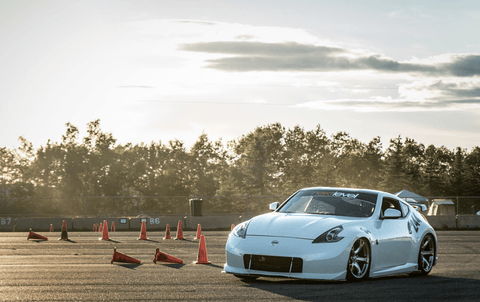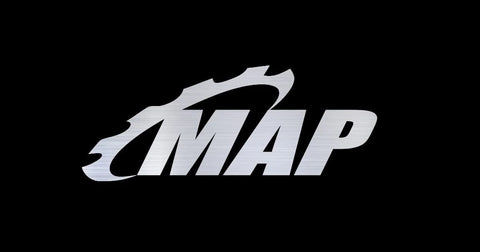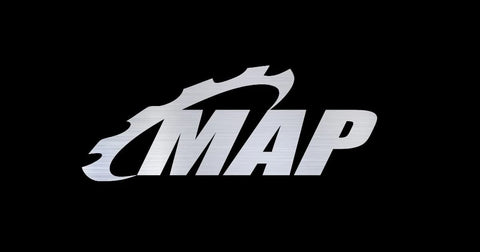Do It Right The First Time
When it comes to building your project car, whatever it is, it pays to do your homework. It will save you time, money and frustration. While it might seem that adding months of extra work to your project would slow you down, it will pay off when you buy things once, and find a reputable shop that will stay on budget, and on time, hence speeding up your overall build time.

I learned these lessons the hard way, and it almost drove me to just getting rid of the car all together. It turned what should have been a yearlong project into a 4 ½ year saga. With thousands of dollars wasted on buying parts then selling them to buy different ones, or dealing with a shop that took advantage of my lack of knowledge, it was a headache that didn’t seem to have an end in sight. Had I done my homework on what I wanted to build my car for and worked backwards from there I would have been in much better shape. With that being said, I would have done things very differently if I could do it over.
Start with the end in mind
Like trying to do a complex maze, it helps to work backwards from where you want to end up. If you know that you want to build a highway monster vs. an autoX weekend warrior, it is much easier to decide what you need and done need to buy for your build. Knowing what you want to do with your car once its finished will also allow you to figure out what power adders you may or may not want. For instance, if you are building a weekend warrior that might see a track day here and there and want to have fun on the top end, then you may want to look at doing a turbo set up; but if you want to have a car that has tons of low end power/torque for autoX or street driving, then you may want to look at a supercharger setup.

2+2=1?
Pick parts that complement each other. Making power in any internal combustion engine is part science and part magic. Sometimes parts work together to make huge gains, like a set of cams that have the right amount of lift and duration for a particular set of turbos that flow a constant CMF for a given RPM range. Other times parts can work against each other, or at least not to their fullest potential, like a set of turbos paired with a manifold that can’t keep up with the amount of charge air that is being forced through it. With that in mind it’s critical that you pick parts that will complement one another and always move you closer to your build goals, and when able try and verify manufacturer claims with empirical data from a reputable source.
Voodoo and Witchcraft
Once you have a solid plan together for the “hard parts” of your build (pistons, rods, cams, etc.), you now have to control the chaos inside the cylinders. For that you need some type of engine management solution. There are all kinds of them out there, everything from simple factory computer reflashes all the way to full blow race applications that have sensors that monitor everything from timing and AFR’s to the drivers “pucker factor”. Again, this will be driven by your specific application and goals. If you are going to have your car set up for daily driving then you may want to look for a factory re-flash option, on the other hand, if you plan on doing any sort of serious autoX, or track days, it may be in your best interest to look for something that has more flexibility and control over events inside the motor.

Pick your poison
Now that you have a majority of what you need for your build you need to choose a shop to do the work if you don’t plan on doing it yourself. This can be a difficult task with the number of “performance” shops out there. For starters determine how far you are willing to travel and how much you are willing to pay, in this game, you really do get what you pay for. Also it pays to look for a shop that works with your specific platform, it makes for less surprises and hang ups during the build. Make sure that you do your homework on the shop, use every resource that you can find, social media, BBB, forums, friends… if you’re able go and visit the shop and talk to the owner/s (you can tell a lot about a shop by how the work area looks, and it gives you the opportunity to look at some of the current builds that they are working on).
Don’t overlook the little things
While all I’ve covered the high points of what I feel you should look at while preparing for a build, by no means should you overlook the little things like what extra gauges should you get, will you need to run extra safety equipment, am I going to have to get new wheels/tires to hold the power that I’m making now, or more importantly do I need to buy them because the giant brake kit that I have now to slow this pig down. There are all kinds of little details that will need to be addressed throughout the build, some of them even being aesthetic. Another thing to think about while you’re in the build process, will you need additional aero to keep the car planted on the track? But that is a whole different post in itself…

Overall, there are TONS of things that need to be considered when you start your build, but if you keep the above points in mind as you start you will be much better off than if you just “wing it” or blindly listen to other people, that may not have your best interests in mind.
Article written by Anthony Adent




Comments (2)
Nice post.
Bought an eco 9 just 2 months ago and I’m realizing that my plan isn’t clear yet and biggest issue didn’t find the right shop yet.
Thx for this article
Nice post.
Bought an eco 9 just 2 months ago and I’m realizing that my plan isn’t clear yet and biggest issue didn’t find the right shop yet.
Thx for this article